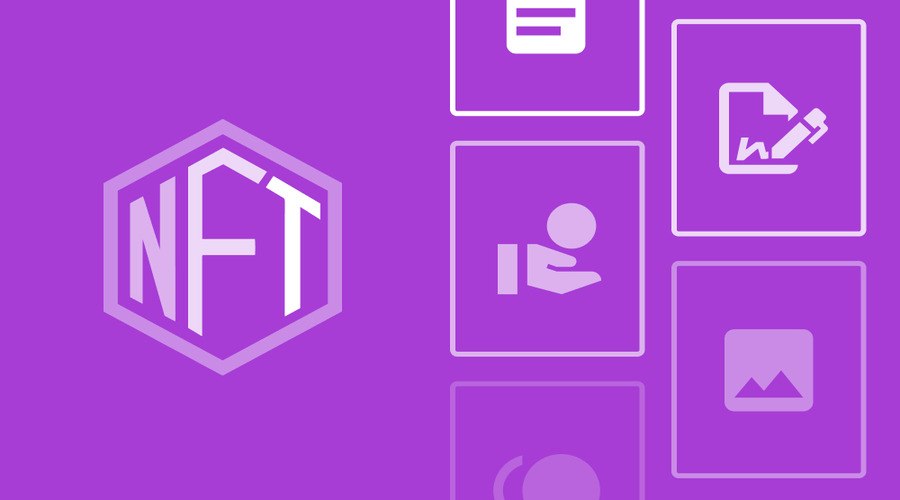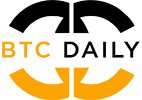The world of digital art has experienced a significant transformation with the emergence of Non-Fungible Tokens (NFTs). NFTs have revolutionized the art market by providing a unique way to authenticate, trade, and collect digital assets. However, one of the challenges faced by the NFT ecosystem is the lack of interoperability among different marketplaces. In this article, we will explore the potential of NFT interoperability for digital art marketplaces, discussing its benefits, challenges, and future prospects.
The Rise of NFTs
Over the past few years, NFTs have gained immense popularity, allowing artists to tokenize their digital creations and sell them as unique assets. NFTs leverage blockchain technology, enabling verifiable ownership and scarcity of digital items. The art world has embraced NFTs, as they provide a solution to the long-standing problem of provenance and authenticity in the digital realm. The rise of Non-Fungible Tokens (NFTs) has been a significant development in the world of digital art. NFTs have gained immense popularity as they provide a unique way to tokenize and authenticate digital assets. By leveraging blockchain technology, NFTs ensure verifiable ownership and scarcity, solving the long-standing problem of provenance in the digital realm. Artists can now tokenize their digital creations, sell them as unique assets, and engage with a global audience. The rise of NFTs has brought about new opportunities for artists, collectors, and enthusiasts, transforming the way we perceive and interact with digital art.
Understanding Interoperability
Interoperability refers to the ability of different systems or platforms to communicate and work together seamlessly. In the context of NFTs, interoperability means that digital assets can be easily transferred, traded, and utilized across multiple platforms and marketplaces. Currently, most NFTs are limited to specific marketplaces, which restricts their potential for widespread adoption and value creation.
Benefits of NFT Interoperability
- Increased Liquidity: NFT interoperability allows digital assets to move seamlessly across different platforms, expanding the market reach for artists and collectors. This increased liquidity leads to improved price discovery, efficient trading, and a larger pool of potential buyers and sellers.
- Enhanced Accessibility: Interoperability enables artists to showcase their work on multiple marketplaces simultaneously, reaching a wider audience. This greater accessibility opens up opportunities for increased exposure, sales, and recognition for artists, as well as providing collectors with a diverse range of options to discover and acquire digital artworks.
- Cross-Platform Collaboration: Interoperability fosters collaboration between different platforms, encouraging innovation and creativity in the digital art space. Artists and collectors can leverage the strengths of various marketplaces, creating unique and diverse experiences for their audiences. This cross-platform collaboration drives the growth and evolution of the digital art market.
- Expanded Value Creation: With interoperability, NFTs can interact with different decentralized applications (dApps) and smart contracts, unlocking new possibilities for value creation. This includes fractional ownership, lending, renting, and other innovative mechanisms that can enhance the utility and value of digital assets.
- Interconnected Ecosystem: NFT interoperability contributes to the development of an interconnected ecosystem where assets can flow freely between different blockchains and platforms. This fosters a vibrant and dynamic marketplace that encourages participation, exploration, and engagement from artists, collectors, and enthusiasts.
- Scalability and Longevity: By allowing NFTs to transcend individual platforms, interoperability ensures scalability and longevity for digital art. Artists’ creations can maintain their value and accessibility over time, even as new platforms emerge or existing ones evolve.
- Improved User Experience: Interoperability simplifies the process of discovering, owning, and managing NFTs for users. It eliminates the need for multiple wallets and platforms, streamlining the user experience and making it more user-friendly and convenient.
- Global Market Reach: NFT interoperability expands the potential global market for digital art, breaking down geographical barriers and allowing artists to connect with collectors from around the world. This global reach opens up new opportunities for artists to gain recognition, reach diverse audiences, and establish themselves in the international art scene.
- Future-Proofing: By embracing interoperability, digital art marketplaces future-proof themselves by adapting to changing technologies and market demands. They stay relevant and ensure continued growth and relevance in a rapidly evolving industry.
- Cultural Exchange and Diversity: NFT interoperability encourages cultural exchange and diversity by allowing artists from different backgrounds and regions to showcase their work on various platforms. This fosters a rich and inclusive art ecosystem that celebrates global creativity and artistic expression.
In summary, NFT interoperability brings forth a multitude of benefits, including increased liquidity, enhanced accessibility, cross-platform collaboration, expanded value creation, an interconnected ecosystem, improved user experience, global market reach, scalability, and future-proofing for the digital art market.

Challenges in Achieving Interoperability
Achieving interoperability in the realm of NFTs poses several challenges that need to be addressed for a seamless and interconnected ecosystem. Here are the key challenges summarized in a list of pointers:
- Technical Limitations: Different blockchain protocols and smart contract standards hinder interoperability. Developing cross-chain solutions and establishing common standards are essential to enable the smooth transfer of NFTs across platforms.
- Standardization Efforts: The absence of standardized protocols for NFT metadata, ownership, and transactions creates barriers to interoperability. Collaborative efforts among industry stakeholders are necessary to establish unified standards and ensure compatibility across platforms.
- Security Concerns: Interoperability introduces new security considerations. Protecting digital assets, verifying authenticity across platforms, and mitigating potential vulnerabilities require robust security measures and industry-wide best practices to build trust and mitigate risks.
- Governance and Coordination: Coordinating efforts among various marketplaces, blockchain developers, and artists to adopt interoperability standards and protocols can be challenging. Establishing effective governance models and coordination mechanisms is crucial to drive interoperability initiatives forward.
- User Experience and Education: Ensuring a seamless user experience and educating users about interoperability can be a challenge. Users need to understand how to navigate cross-platform transactions and manage their assets effectively in an interoperable environment.
- Scalability and Performance: Interoperability solutions must address scalability and performance issues to accommodate the increased volume of transactions and data flow across platforms. Ensuring efficient and reliable operations is crucial for a smooth and sustainable interoperable ecosystem.
- Regulatory Landscape: The evolving regulatory landscape surrounding NFTs and blockchain technology can pose challenges to achieving interoperability. Compliance with regulations and legal frameworks across different jurisdictions adds complexity to cross-platform transactions and interoperable solutions.
- Industry Collaboration: Achieving interoperability requires collaboration and cooperation among industry stakeholders. Encouraging marketplaces, developers, and artists to work together and share resources and knowledge is essential to overcome challenges and drive interoperability efforts.
- Legacy Systems and Adoption: Integrating interoperability solutions with existing legacy systems and platforms can be complex. Encouraging adoption and migration to interoperable frameworks is crucial for realizing the benefits of cross-platform compatibility.
- Balancing Innovation and Standardization: Striking a balance between fostering innovation and establishing standardized protocols is a challenge. While innovation drives progress, establishing common interoperability standards ensures consistency, compatibility, and a secure ecosystem for NFTs.
Initiatives Towards Interoperability
Several initiatives are already underway to address the challenges of NFT interoperability. Projects such as Cross-Chain NFT Bridges and NFT standards like ERC-998 are working towards enabling seamless transferability of NFTs across multiple blockchains. Collaborative efforts between marketplaces are also fostering interoperability by allowing the cross-listing of NFTs.
Future Outlook
The future of NFT interoperability holds great promise for the digital art market. As technical barriers are overcome and standards are established, we can expect a more interconnected and fluid ecosystem for digital assets. Interoperability will enhance the value proposition of NFTs, attracting a broader user base and encouraging further adoption by mainstream audiences.
The future outlook for NFT interoperability in digital art marketplaces can be summarized in the following pointers:
- Increased connectivity and fluidity in the NFT ecosystem.
- Expanded user base and mainstream adoption.
- Cross-platform collaboration and innovation.
- Enhanced value proposition for artists and collectors.
- Continued development of standards and technical solutions.
- Evolution of security measures to mitigate risks.
- Integration of NFTs with emerging technologies.
- Global recognition and acceptance of digital art as a valuable medium.
Conclusion
NFT interoperability is a pivotal factor in shaping the future of digital art marketplaces. By enabling seamless transferability and collaboration across platforms, interoperability increases liquidity, accessibility, and innovation in the digital art space. While challenges exist, ongoing efforts and initiatives are paving the way for a more interconnected and vibrant NFT ecosystem.
FAQs
Q1: How do NFTs authenticate digital art?
NFTs authenticate digital art by leveraging blockchain technology. Each NFT is unique and contains metadata that verifies its ownership, provenance, and characteristics, providing a secure and transparent way to authenticate digital assets.
Q2: Can NFTs be traded on different platforms?
Currently, most NFTs are limited to specific platforms, but initiatives towards interoperability aim to enable the seamless transfer of NFTs across different marketplaces, allowing for increased liquidity and accessibility.
Q3: What are the security risks associated with NFT interoperability?
Interoperability introduces security concerns such as asset protection, authenticity verification, and vulnerability risks. Robust security measures, industry-wide best practices, and audits are crucial to address these risks and ensure the integrity of NFT transactions.
Q4: How can NFT interoperability benefit artists?
NFT interoperability benefits artists by expanding their market reach, increasing liquidity for their artworks, and fostering cross-platform collaboration. It allows artists to showcase their work to a wider audience, explore new business models, and build partnerships in the digital art space.
Q5: How will NFT interoperability impact the future of digital art marketplaces?
NFT interoperability will create a more interconnected and fluid ecosystem for digital art marketplaces. It will attract a broader user base, drive innovation through cross-platform collaboration, and further establish NFTs as a valuable and accessible medium for artists and collectors.





